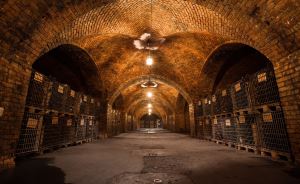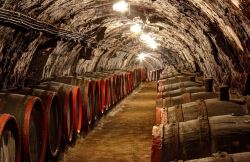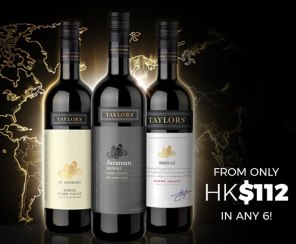The Wine Cellar Business

Wines are stored, cared for and serviced, usually in barrels or bottles, in a wine cellar. Large active wine cellars have been around for almost 4,000 years and in mediaval houses were managed by a team termed the buttery. A wine cellar doesn’t have to be underground, and for those above ground may also be termed a wine room. An active wine cellar is a storage room for wine where the temperature is regulated by a climate control system to be at a constant temperature between 12-16 degrees centigrade, 60-70% humidity and where it is dark, still, well ventilated and clean.
A passive wine cellar is not climate-controlled, and these are usually built underground to keep the temperature relatively constant. A small wine cellar with fewer than 500 bottles is sometimes known as a wine closet.
Purpose
Wine cellars protect the wine from spoiling. When is wine made, as a natural food product it is sensitive and can be spoiled by exposure to light, heat, vibration or significant changes in temperature and humidity. The proper storage of wines ensures that quality is maintained and lets the wine mature which improves the aroma, flavour and complexity. Wines with a high level of alcohol or sugar are less sensitive to changes in temperature.
Conditions
Wine can be stored well between 7–18 °C (45–64 °F) though if there are variations in temperature, these should be gradual. In France, wine that is stored in caves is kept at a temperature of 13 °C (55 °F), which is ideal for both short-term storage and the long-term aging of wine, though wines stored between 10–14 °C (50–57 °F) will age normally. The temperature that is chosen will depend on how you want the wine to mature, since wine generally matures differently and at a slower rate when at a lower temperature than at a higher temperature.
Heat damage, particularly in a young wine, can be seen in the colour of the wine changing to a brick red-brown colour, or it may taste a little like sherry, since sherry is an oxidised wine. If there are significant changes in temperature of around 14 °C (57 °F), over time this will cause the cork to continual expand and contract, which is similar to having the cork pulled in and out again every day. When this happens, you are likely to see minute quantities of wine pushed out between the cork and the neck of the bottle, this lets air into the wine which is then ruined through oxidation.
Bottles of wine should be stored on their side so the wine is in contact with the cork, keeping it wet. If the cork dries out it will shrink and let air get to the wine. This oxidation will then turn the wine into vinegar. However, if you are storing sparkling wines and champagnes, these can be stored standing up as the carbon dioxide, which is heavier than air, will naturally rise to sit in the neck of the bottle and protect the wine from contact with the air.
Active versus passive
 Active wine cellars are usually built for the purpose, with good insulation and a conditioning and cooling systems which maintains the required temperature and humidity. Passive wine cellars, such as a basement or a cave, naturally maintain the same cool temperature and damp humidity, with only minor variations throughout the year. Passive cellars usually need no technological support.
Active wine cellars are usually built for the purpose, with good insulation and a conditioning and cooling systems which maintains the required temperature and humidity. Passive wine cellars, such as a basement or a cave, naturally maintain the same cool temperature and damp humidity, with only minor variations throughout the year. Passive cellars usually need no technological support.
Humidity
Whilst some claim that the relative humidity within a bottle is always maintained whatever the humidity levels in a wine cellar, others state that low humidity can be a problem for those using organic corks which can become prematurely dry. Humidity is a measure of water held in the air as a gas. Management of humidity levels can be achieved without technology, with some cellars covering the floor with an inch of gravel which is sprinkled with water on occasion to achieve the desired humidity. If you are storing in a wine closet, an easy way to increase the humidity is to leave out a bucket of water which will naturally evaporate and raise the humidity levels to the ideal 60-70%, though there is leeway of 10% either side.
Relative Humidity Range (%RH) for 65+ ℉ Cabinet or Cellar Temperature
| %RH | 65 | 70 | 75 | 80 | 90 |
|---|---|---|---|---|---|
| 10 | 9 - 14 | 12 - 17 | 15 - 20 | 18 - 23 | 27 - 32 |
| 20 | 23 - 28 | 29 - 34 | 35 - 40 | 42 - 47 | 50 - 60 |
| 30 | 38 - 43 | 44 - 49 | 50 - 60 | 50 - 60 | 60 - 70 |
| 40 | 50 - 60 | 50 - 60 | 50 - 60 | 60 - 70 | 65 - 70 |
| 50 | 50 - 60 | 60 - 70 | 65 - 70 | 65 - 70 | 65 - 70 |
| 60 | 60 - 70 | 60 - 70 | 65 - 70 | 65 - 70 | 65 - 70 |
Light
 Wine is stored in the dark since light will cause the wine to age prematurely. Even dark coloured bottles can be affected by ultraviolet (UV) light. Ultraviolet light damages the organic compounds found in wine, particularly tannins. When damaged by light, the aroma, flavour and structure of the wine becomes weaker and this is an irreversible change. Incandescent or sodium vapour lights are better for a cellar than fluorescent lights that give off a lot of UV light. A glass-fronted wine storage cabinet may protect the bottle from dust and reduce the risk of the label being damaged, but the glass also transmits UV light.
Wine is stored in the dark since light will cause the wine to age prematurely. Even dark coloured bottles can be affected by ultraviolet (UV) light. Ultraviolet light damages the organic compounds found in wine, particularly tannins. When damaged by light, the aroma, flavour and structure of the wine becomes weaker and this is an irreversible change. Incandescent or sodium vapour lights are better for a cellar than fluorescent lights that give off a lot of UV light. A glass-fronted wine storage cabinet may protect the bottle from dust and reduce the risk of the label being damaged, but the glass also transmits UV light.



